Kengo Kuma's Tsumiki building blocks can be arranged to create original sculptures
Japanese architect Kengo Kuma has created a modelling kit made up of triangular-shaped wooden pieces, which has been described as the Japanese alternative to Lego (+ slideshow).
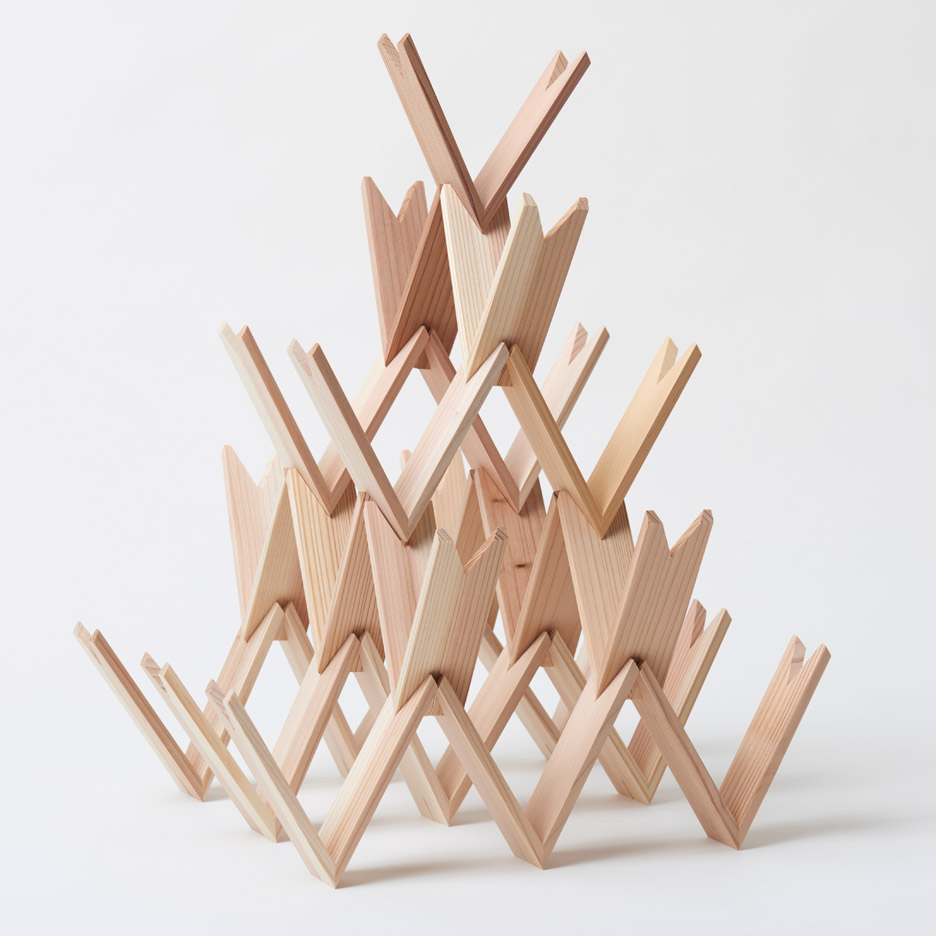
The stackable system was created by Kuma, who is one of Japan's most respected architects, in collaboration with forest conservation organisation More Trees, and is constructed from Japanese cedar wood certified by the Forest Stewardship Council.
Named Tsumiki — Japanese for building blocks — the individual components can be stacked and arranged in a variety of formations to create unique sculptures.
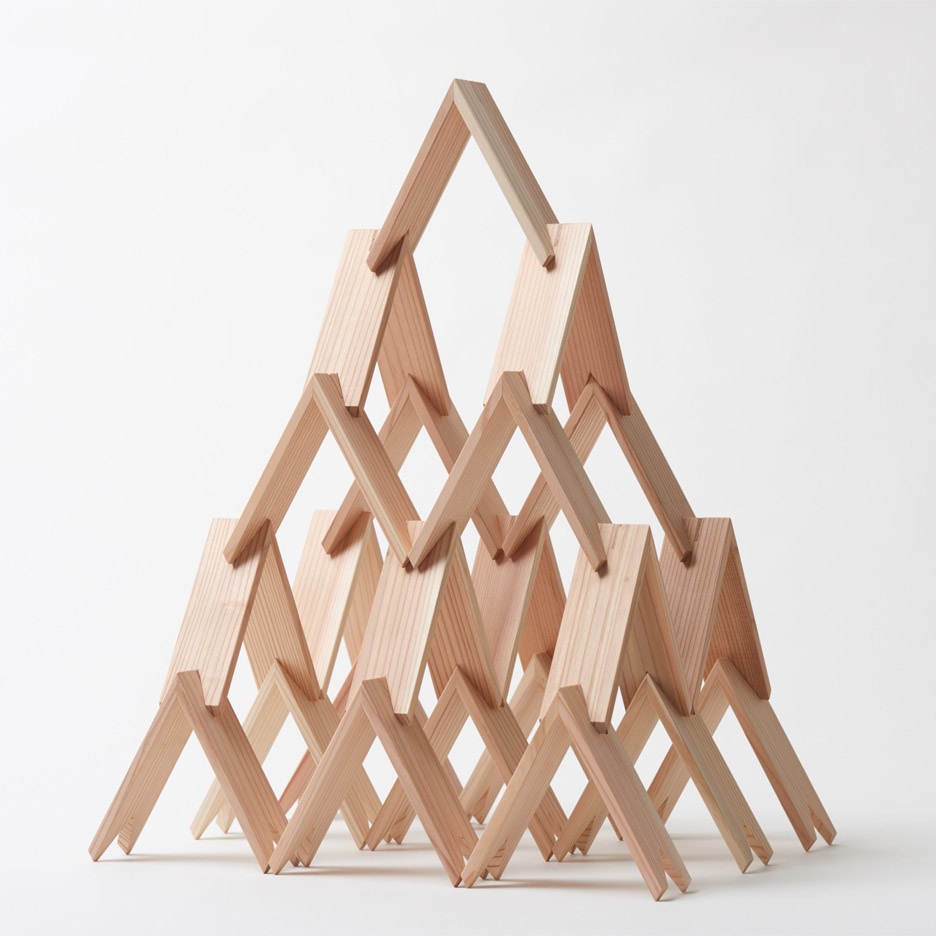
"I have loved tsumiki my whole life, ever since I was a young boy," said Kuma, 61. "And my dream came true, I designed tsumiki myself, the sort which hadn't existed before," he said.
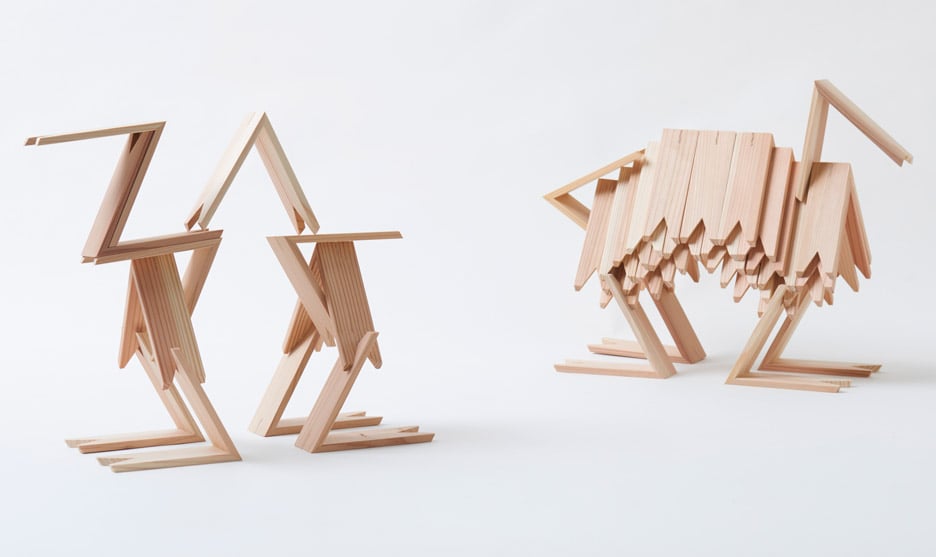
"It's not a heavy, masonry kind of wood block, but a light, transparent system just like what you see in traditional Japanese architecture," he added.
Each component has a V-shaped form, with chevron-shaped indents cut into its ends. These notches allow the pieces to slot onto one another and build up more complex shapes without the need for adhesives.
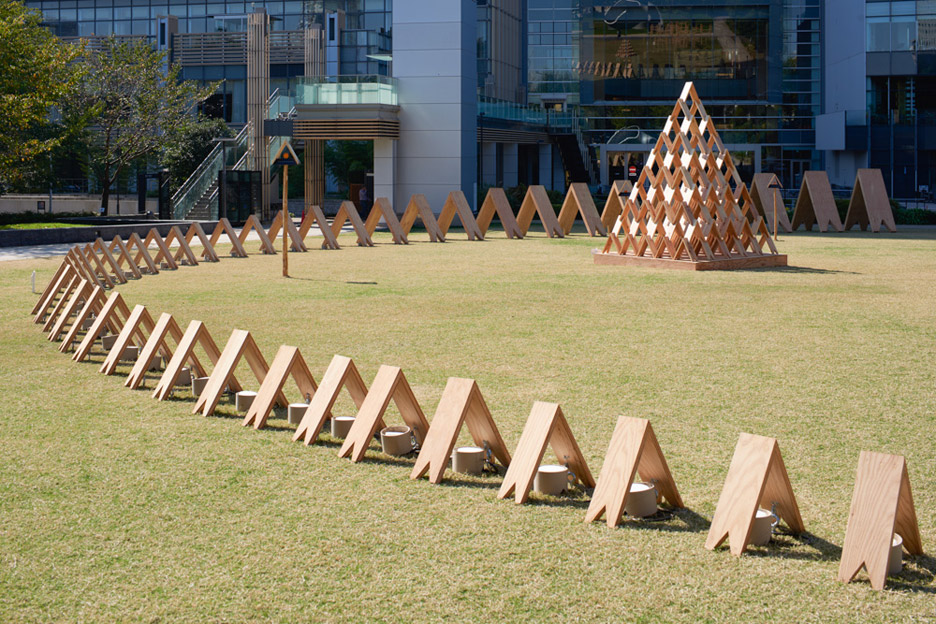
The V shapes also enable the blocks to support themselves when stood up, laid on the side or balanced on one arm.
Models can be easily disassembled and the pieces reused. Italian design magazine Domus described Tsumiki as the Japanese version of popular Danish building blocks Lego.
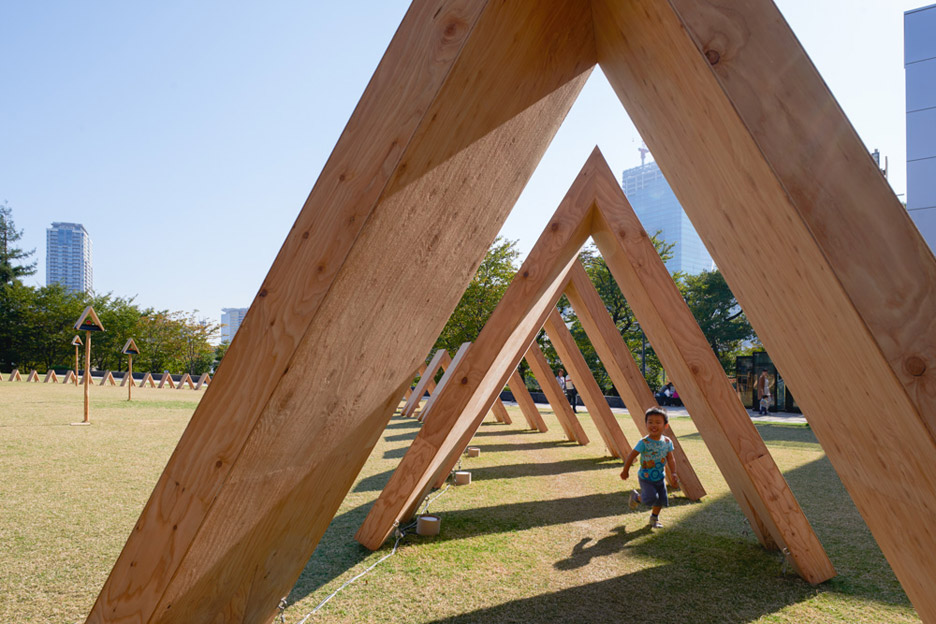
Kuma's Tokyo-based studio "Kengo Kuma & Associates, created a series of giant-sized Tsumiki pieces to form a pavilion for this year's Tokyo Design Week, which took place from 24 October to 3 November 2015.
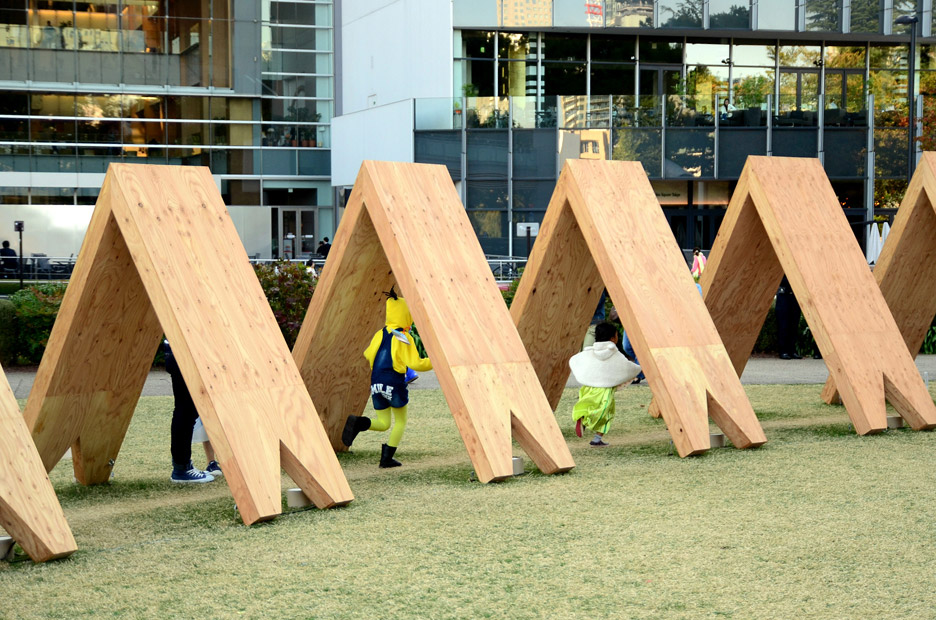
The temporary structure was situated within a park in Tokyo's Midtown, and was made up of a pyramid-shaped pavilion and a series of blocks arranged in a semi-circle.
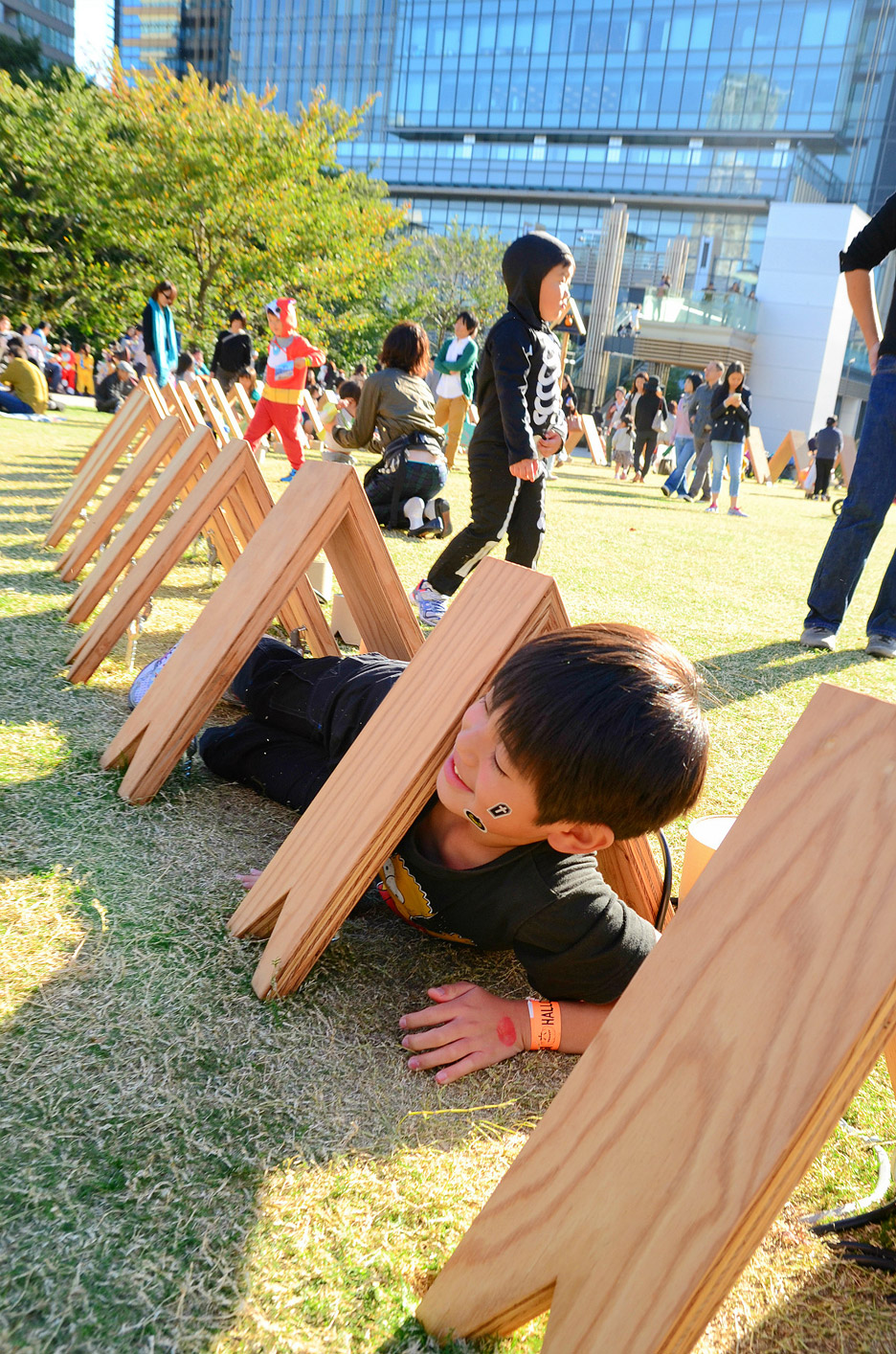
Once available to purchase, the modelling kits will be sold in sets of seven, 13 and 22 pieces.
Architect Damien Murtagh also prompted comparisons with Lego when he released a reusable three-dimensional modelling system for architects and designers earlier this year. Lego has launched its own kit aimed at the architecture and design community.

Kengo Kuma & Associates recently installed a climbable wooden pavilion in a Paris park, and unveiled plans for a cave-shaped and plant-covered museum dedicated to Filipino history.
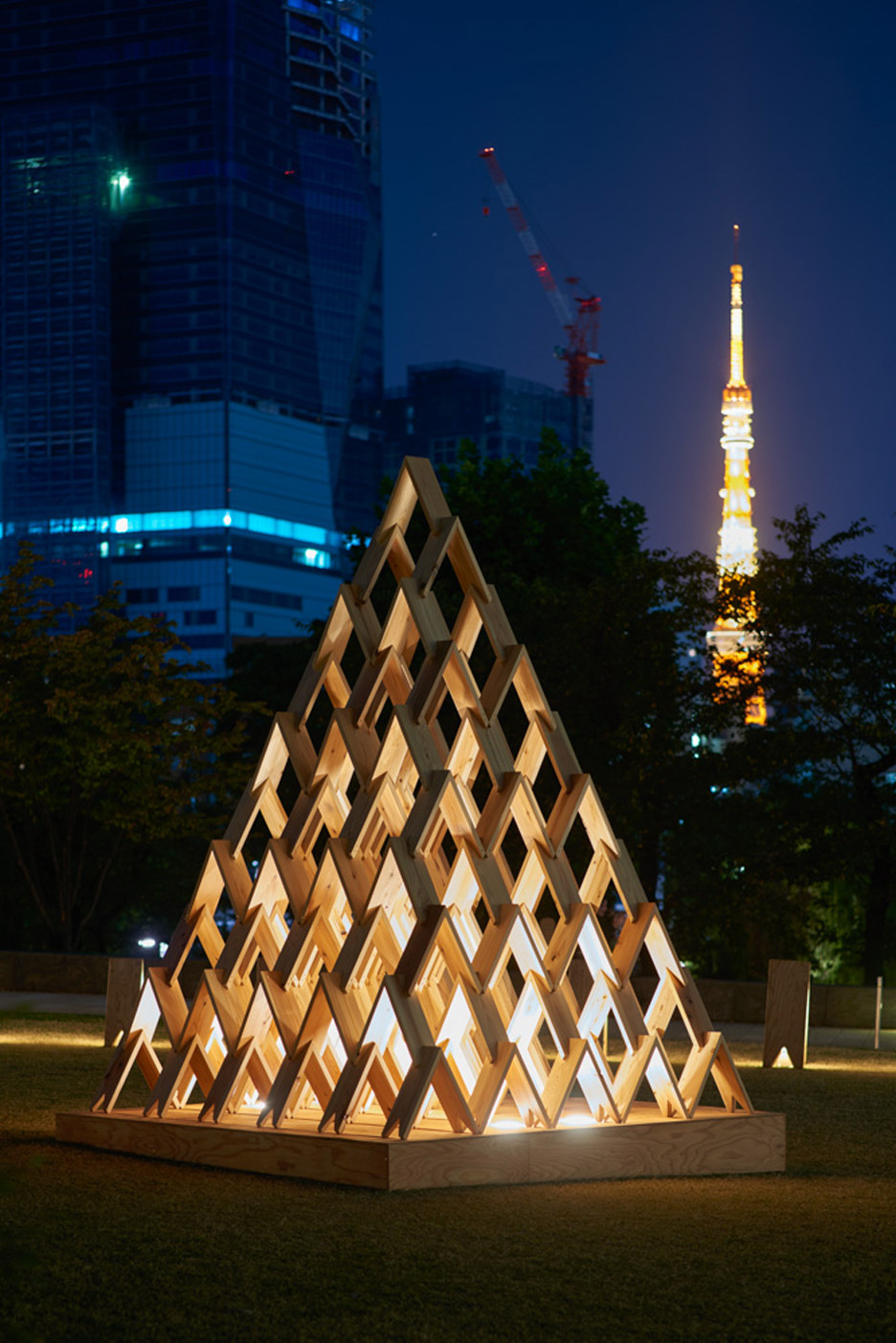
The firm also completed work on a Chinese folk-art museum in Hangzhou, which features a sprawling tiled roof line that is designed to mimic the appearance of a small village.
Photography is by Ikunori Yamamoto